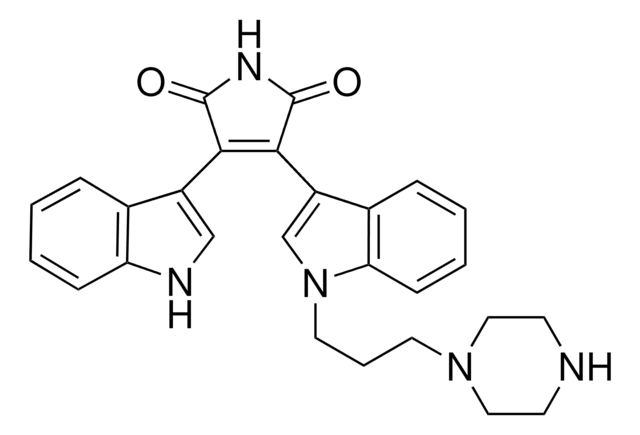B7661
Monoclonal Anti-Phosphothreonine−Biotin antibody produced in mouse
clone PTR-8, purified immunoglobulin, buffered aqueous solution
Synonym(e):
Monoclonal Anti-Phosphothreonine, Phospho Thr, Phospho Threonine, Phospho-Thr, Phospho-Threonine, p-Thr
About This Item
Empfohlene Produkte
Biologische Quelle
mouse
Konjugat
biotin conjugate
Antikörperform
purified immunoglobulin
Antikörper-Produkttyp
primary antibodies
Klon
PTR-8, monoclonal
Form
buffered aqueous solution
Methode(n)
direct ELISA: 1:40,000 using phosphothreonine-BSA at 10 μg/ml, and using ExtrAvidin-HRP at 2 μg/ml
dot blot: 1:120,000
Isotyp
IgG2b
Versandbedingung
dry ice
Lagertemp.
−20°C
Posttranslationale Modifikation Target
unmodified
Suchen Sie nach ähnlichen Produkten? Aufrufen Leitfaden zum Produktvergleich
Allgemeine Beschreibung
Immunogen
Anwendung
Biochem./physiol. Wirkung
Physikalische Form
Lagerung und Haltbarkeit
Haftungsausschluss
Sie haben nicht das passende Produkt gefunden?
Probieren Sie unser Produkt-Auswahlhilfe. aus.
Lagerklassenschlüssel
10 - Combustible liquids
WGK
nwg
Flammpunkt (°F)
Not applicable
Flammpunkt (°C)
Not applicable
Hier finden Sie alle aktuellen Versionen:
Analysenzertifikate (COA)
Die passende Version wird nicht angezeigt?
Wenn Sie eine bestimmte Version benötigen, können Sie anhand der Lot- oder Chargennummer nach einem spezifischen Zertifikat suchen.
Besitzen Sie dieses Produkt bereits?
In der Dokumentenbibliothek finden Sie die Dokumentation zu den Produkten, die Sie kürzlich erworben haben.
Active Filters
Unser Team von Wissenschaftlern verfügt über Erfahrung in allen Forschungsbereichen einschließlich Life Science, Materialwissenschaften, chemischer Synthese, Chromatographie, Analytik und vielen mehr..
Setzen Sie sich mit dem technischen Dienst in Verbindung.







